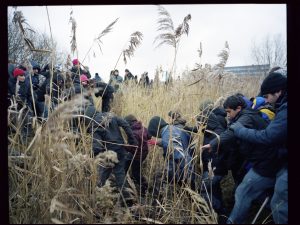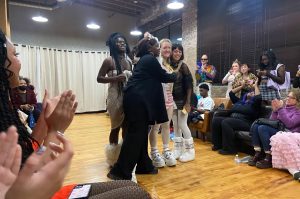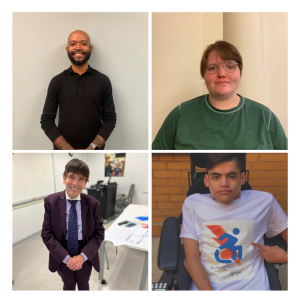
It is easy to be an activist online. We know this. We do this. My Facebook feed is often full of my like-minded, progressive, liberal friends sharing their beliefs, from photo collages of alarming statistics to HuffPo articles that they probably only had time to read the headline of before they clicked “share.”
We have to do better than this.
The world and the people in it that we so desperately want justice, hope, and change for deserve our best efforts in making their lives better. That is why we must use social media as a jumping off point to enact real change instead of hiding behind it to make sure all of our friends who already agree with us know how “woke” we are. If we click retweet and hashtag this and that all day long, we think we are fighting the good fight when we are not actually doing anything.
Social media is beneficial in many ways for activism in today’s age. Without Facebook Live Stream, the killing of Philando Castile by a Minnesota police officer would not have been shown to the world in all of its horror and injustice. This platform was crucial in showcasing how enormous the problem of police brutality is firsthand and in the moment. It made a lot of people wake up and realize something needs to be done, and soon.
Fred Brooks, a professor of social work at Georgia State University in Atlanta, GA, said social media “can mobilize large numbers of people very quickly and effectively, to [show up at] events and demonstrations,” which can be effective in the short run. Word can travel fast, and it can travel everywhere.
But that is not enough. Brooks said the drawback of social media is “quick mobilization without a serious and well-thought out strategy is unlikely to win anything lasting and substantial.” Brooks said social media could be a real benefit, if this mass mobilization was combined with “a sound strategy to win something that makes a difference in people’s lives.”
Often protests organized online without a clear plan and end goal are not strategic enough to lead to visible change. “If all thousands of people do is march and go home and nothing is changed in terms of power and policy, then what have you accomplished?” said Brooks.
This is important to note, as many young people were posting on Facebook after Donald Trump won the presidency that we need “revolution;” but real revolution requires enormous thought, time, strategy, and knowledge. It takes longer than the two minutes it takes to post a status about revolution to actually form a strong and substantial plan.

For example, Madeline Talbott, long-time Chicago community organizer with ACORN, ActionNow and FightFor15, said the main strategy she has always believed in is “we can build a majority organization of folks who want change by reaching out to them one by one, and asking, not telling them, what they are concerned about.”
After Trump was elected Talbott’s reaction was “I reached out to five other people in my immediate neighborhood, [Albany Park], and we decided to reach out to people in our precinct. Each of us volunteered to take two blocks and door knock with a flyer that we wrote together, English and Spanish, and the ‘HateHasNoHomeHere’ sign, in Arabic, Spanish, Korean, English and Hebrew.”
Talbott did what she could at that moment to begin long-term change.
Talbott said, “I have hopes that the group will turn into an independent precinct organization, which will turn out more voters through relationships and perhaps make space for some political education.”
Starting locally, with a clear path and objective is more effective and strategic, and will inevitably create more change than quick demands for revolution that lead to little action.
The strategy of reaching out to people individually and one at a time is seen in how Talbott and Jon Kest of NY started Fight for 15 in 2012.
“I decided to reach out to low wage workers at their job [in] the Magnificent Mile and the Loop and sent organizers door to door to talk to workers about wages or lack thereof, benefits, sexual harassment, etc.,” Talbott said on beginning the organization, “We built an organization of workers making less than $15, and Fight for 15 has won wage increases for over 20 million workers so far, and is still going!”
This is another example that “one-on-one relationships of trust go further toward permitting us to motivate each other to act and serve to build solidarity,” as Talbott put it.
On the role of social media in modern activism, Talbott said, “Facebook is a tool to use for organized groups, and to some extent, social media can be used to activate folks. But to grow the movement, I think we will always need face-to-face organizing.”
So, what can you do? Look around you. Talk to people who agree with you, and to people who do not. You have to know what you are fighting for and who you are fighting before you fight. As Sun Tzu writes in “The Art of War” on the importance of preparation, “every battle is won before it is ever fought.”
Brooks said the first thing to do is build a base and create a campaign strategy, “where the people without power have to figure out how to be disruptive enough to make it in the self-interest of the powerful/oppressors to negotiate, compromise and give something up.”
This can take a wide variety of forms, from simple pressure tactics such as petitions, phone calls, letters, etc., to more confrontational tactics like demonstrations, media pressure, civil disobedience, even actions on people in their homes, lawsuits, shareholder tactics, media stunts and social media pressure.
Brooks is right when he said, we have to “combine mass mobilization with a well-designed strategic campaign to win something concrete.” And we have to look up from our phones and look at each other.

















Be First to Comment